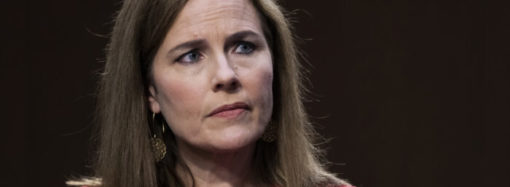A pair of energy policy moves made by the Obama administration at the end of 2013 could have an impact far beyond the end of second term, drawing criticism from natural resource proponents and environmentalists alike.
Last week, the White House issued a memorandum targeting a requirement of 20 percent of all energy consumed by Federal agencies to come from renewables:
Section 1. Renewable Energy Target. (a) By fiscal year 2020, to the extent economically feasible and technically practicable, 20 percent of the total amount of electric energy consumed by each agency during any fiscal year shall be renewable energy.
(b) Agencies shall seek to achieve the renewable energy consumption target set forth in subsection (a) of this section by, where possible, taking the following actions, which are listed in order of priority:
(i) installing agency-funded renewable energy on-site at Federal facilities and retain renewable energy certificates;
(ii) contracting for energy that includes the installation of a renewable energy project on-site at a Federal facility or off-site from a Federal facility and the retention of renewable energy certificates for the term of the contract;
(iii) purchasing electricity and corresponding renewable energy certificates; and
(iv) purchasing renewable energy certificates.
The memorandum details a stepped approach, with year-over-year minimum targets to reach the 20 percent benchmark:
(i) not less than 10 percent in fiscal year 2015;
(ii) not less than 15 percent in fiscal years 2016 and 2017;
(iii) not less than 17.5 percent in fiscal years 2018 and 2019; and
(iv) not less than 20 percent in fiscal year 2020 and each fiscal year thereafter.
Naturally, the President’s move has drawn opposition. The mandate will put pressure on the markets for both traditional energy sources and renewables , and could put consumers on the hook for higher energy costs with the Federal government picking energy winners and losers, according to The Daily Caller.
But a move to extend the life of one renewable energy source–in this case, wind–by granting a six-fold extension to ‘takings’ permits issued to wind farms that allow the accidental killing of bald and golden eagles has united opponents normally at odds: Senator David Vitter (R-LA) and groups like the National Audubon Society and Natural Resources Defense Council.
A sampling, from Politico:
It’s baldly un-American, Vitter said Friday.
“Permits to kill eagles just seem unpatriotic, and 30 years is a long time for some of these projects to accrue a high death rate,” said the Louisiana senator, who is the top Republican on the Senate Environment and Public Works Committee and one of Congress’s most outspoken critics of wind.
Sounding a similar theme, National Audubon Society CEO David Yarnold said it’s “outrageous that the government is sanctioning the killing of America’s symbol, the bald eagle.” He indicated his group may sue the administration.
The rule also drew criticism from Frances Beinecke, president of the Natural Resources Defense Council, who said it “sets up a false choice that we intend to fight to reverse.”
“This rule could lead to many unnecessary deaths of eagles. And that’s a wrong-headed approach,” she said. “We can, and must, protect wildlife as we promote clean, renewable energy. The Fish and Wildlife Service missed an opportunity to issue a rule that would do just that.”
Secretary of the Interior Sally Jewell defended the rule change.
“Renewable energy development is vitally important to our nation’s future, but it has to be done in the right way. The changes in this permitting program will help the renewable energy industry and others develop projects that can operate in the longer term, while ensuring bald and golden eagles continue to thrive for future generations,” Jewell said.
The National Wildlife Federation and the American Bird Conservancy also criticized the move. Conservationists had also hoped to postpone the takings ruling earlier this year when they lobbied the White House, asking for more time to learn more about the way wind energy interacted with wildlife, and particularly, birds and bats.
“The question is what is the science telling us about how to prevent eagle takings, and we’re still waiting for the science to tell us how that works,” Defender of WIldlife’s Julie Falkner told The Hill in August.
At least 67 eagles of both types have been killed by wind turbines since 2008, according to government biologists. One wind site in California sees approximately 60 eagle deaths per year, the AP found, and a new site in Wyoming could register the same death toll each year once it is up and running. A proposed Maryland wind farm could see 20 fatalities a year, and developers have pulled back temporarily, citing the need to study the impact on eagles in the area before completing the project.
A 2012 peer-reviewed study estimated that Federal statistics provided in 2009 of 440,000 birds killed per year may have been off by as much as 30 percent, putting the figure closer to 575,000 birds and nearly 900,000 bats killed annually with current installed wind capacity.
Those deaths were kept quiet, and the push for the rule change came as much from corporate pressure as it did from an administration willing to accept energy tradeoffs, according to the Associated Press’s Dina Capiello:
An investigation by The Associated Press earlier this year documented the illegal killing of eagles around wind farms, the Obama administration’s reluctance to prosecute such cases and its willingness to help keep the scope of the eagle deaths secret. President Barack Obama has championed the pollution-free energy, nearly doubling America’s wind power in his first term as a way to tackle global warming.
But all energy has costs, and the administration has been forced to accept the not-so-green sides of green energy as a means to an end.







